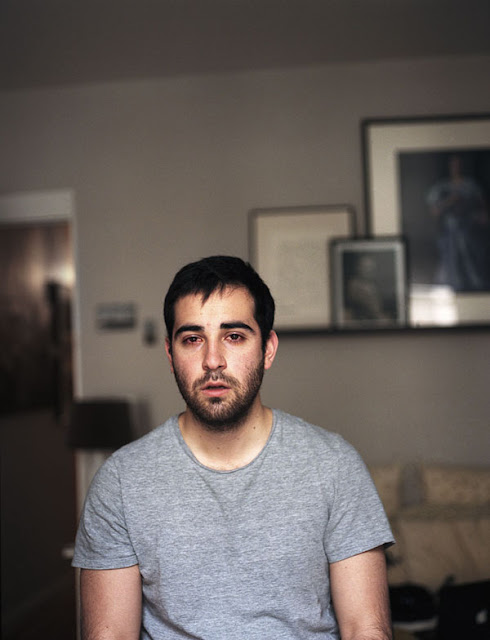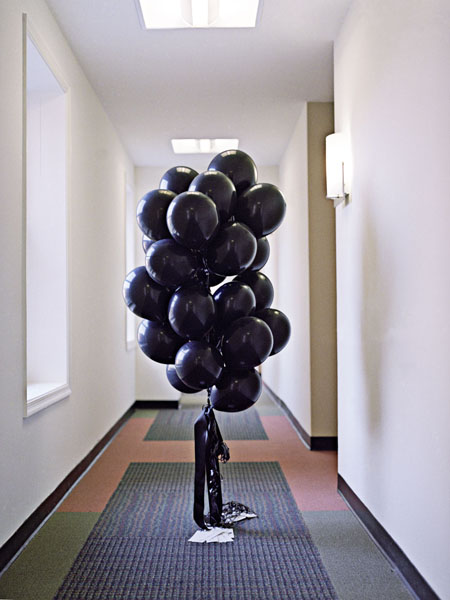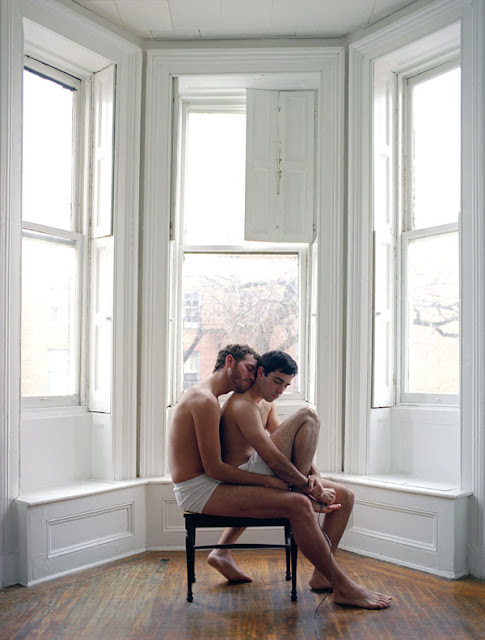Once again I am honored to feature the work of another artist on this blog. Rafael Soldi has been kind enough to answer questions and discuss his work. I was able to sit down first hand and talk about his process but now I have the opportunity to bring some of those original thoughts, along with new ideas, to a wider audience. His work is deeply moving and the discussion brings to light context, origination and direction. Please read on and visit his website to see more work by him. The Artist Statement for: SENTIMENT (In progress) For over three years my work has focused on my cultural transition and its implications as I come to terms with my homosexuality. I drew attention to my childhood, my family and the environments that surround me. Eventually I turned my camera towards my now defunct relationship, which became pivotal in defining my present-day identity. Now I turn my camera towards myself, as I fight to reconstruct a life without the very thing that I thought defined me. Sentiment emerges from my longing to photograph feelings that are sui generis, manifested uniquely through my person. These images represent my struggle to surface from darkness, panic and hopelessness. Just as I once escaped my motherland to pursue a foreign one that welcomed me wholly, I now find myself escaping something foreign which has taken residence in my body and have turned the camera on it in hopes of a full exorcism. **** [q&a]
I would like to focus on the series Sentiment because this is the work we spoke about but please do not feel constrained to only talking about that.
John Szarkowski once referred to narrative photography in the personal context as, “a way of living” do you feel your photography has evolved into this practice?
Absolutely, what a great reference. As my work develops I have become less concerned with bringing predetermined meaning to my images but rather allow for the conceptual integrity of a project to be born from within itself. At some point with personal narrative the work turns so personal that it becomes a visual reflection of life itself, to the point where the process becomes instinctual and henceforth a way of living. I think Szarkowski is referring to the power of personal photographic narrative to channel life, its ability to reference our subconscious and unfold it before us. Sometimes it is even a bit frightening when I realize that my photographs know me better than I know myself, as I worked through my breakup there were things I was perfectly comfortable communicating with an image but incapable of expressing with words. For me it is performance in a way, the photograph acting as a tool that fetishizes life –you can see this in Tina Barney’s work, David Hilliard or even Doug DuBois. Seeing their personal lives unfold right there on the pages of their books is quite bizarre… you can see the way each has turned their image-making into a way of living. But back to the performative aspect, I don’t really document my life like Barney or DuBois do; I interpret it and symbolize it and sum it up into gestures that, even though sometimes literal renditions of one specific moment, stand for a larger emotional metaphor. In this respect I’ve been more aware of works by Elinor Caruci and John Arsenault.
 Your photographic work manifests itself in deeply personal narratives; does this translate into your understanding of time, as a reflective awareness, anticipation of a forthcoming future or something else entirely?
Your photographic work manifests itself in deeply personal narratives; does this translate into your understanding of time, as a reflective awareness, anticipation of a forthcoming future or something else entirely?
There comes a point in deeply personal work in which the line blurs and you find yourself living in your work, channeling reality through it, instead of channeling your work through reality. When your personal life directly informs your work it’s hard not to think about time and the future, knowing that those factors will be active facilitators of your professional practice and creative process. For almost two years now my work has been very dark, I have used photography to explore and understand feelings unlike anything I’ve ever felt: loneliness, pain, regret, fear and loss. My project Sentiment became an exorcism of sorts, a cry for help and a violent discharge of horrifying emotions. With time I learned to live this way and I produced work that I considered powerful and important, so the idea of time became a very scary thing.
You mentioned reflective awareness and anticipation of the future. As time passed by I have slowly healed and I’ve shifted my focus towards my career, a new life in a new city and new friendships. All of the sudden life is looking up and you’d think this would be a great thing, but it’s terrifying. I ask myself, what am I supposed to make work about now? Pictures of a very happy life sound kind of lame. I’ve discovered that I have spent so much time living IN my work that now I’m afraid to escape it. So, yes, these personal narratives do affect my understanding of time and my grasp of a forthcoming future. This work contains universal struggles and emotions, do these ideas resonate with you at the time of creation or is considered on a different level?
It depends, each photograph has been made in a very specific context, in very different places both physically and emotionally. Some images were produced with a specific concept in mind, while some were a gut reaction to an abstract feeling. Some were made with one intention and the results surprised me and lead me to something else entirely. For example, the image titled “Panic” is quite literal, it was taken promptly after a powerful panic attack; with the exception of moving some distracting things out of the frame, the space and myself looked the same and I was still in distress when this was taken. In the case of “You’re Here, I’m There,” I went in knowing the title before I even took the image. The image I had in mind was completely different, it featured me nude wrapped in this large map. As I kept shooting things changed and I felt more and more angry, so I pointed my camera down and attacked the map with my hands while pushing the cable release with my knees (I almost always shoot alone). It was the last frame in the roll and the only image I took of this composition and it just worked, I never expected anger to become such an important part of the image. In the case of “Bajo Tu Manto,” it was an instinctual response to an urge to make that image… I’m still figuring out what it means.

 Your images embody a particular color palette, how do you anticipate or consider the use of color when approaching this work?
Your images embody a particular color palette, how do you anticipate or consider the use of color when approaching this work?
Yes, I always try to stick to a specific palette. I don’t think about it much, I just respond to it aesthetically. I don’t like saturation or very intense colors; they are distracting and take away from the content of the work. There is a place for everything, I guess, sometimes I feel extreme color is used as a crutch to compensate for boring content. I also always use the same low-contrast film and only shoot with daylight which probably contributes to the aesthetic of my work. The series Sentiment has a very poetic sequencing between object and image, how are you concluding what the story should embrace? Is there a place where you would like to see it go?
The addition of objects to the series is very recent and I am still unsure about its exact purpose. For now I am calling it “evidence,” as these are things that are surfacing in my life unexpectedly, as evidence of the relationship that once existed. In the series I also photograph objects, which mostly hold symbolic meaning: a pocket watch that references the time that has passed, that which is to come and that which presently heals. Or the image titled “21 Reasons Why I Love You”, which features 21 balloons my ex-boyfriend gifted me on my 21st birthday, each representing a reason why he loved me. Now I look at this image and the balloons no longer represent unconditional love, they rather resemble a dark cloud, an omen of what’s to come and the last two years of my life.
 Where do you hope to take this work or where can the reader see it now?
Where do you hope to take this work or where can the reader see it now?
I would like to start considering the installation of this work in a gallery setting and looking at the possibilities that exist with the physicality of the work. I’m referring more specifically to the way in which the images can be hung such that it evokes the right type of reaction from a viewer. Playing with scale and the arrangement of the work on the wall can give a certain visual poetic three-dimensionality to it and add power to the images. But again, I’m going to have to try this, because for all I know it could turn out to be a disaster. I have been very actively applying for grants and fellowships to underwrite the costs of production for an exhibition before I start pitching the work to galleries. I have a studio visit/open studio planned for lat May here in Seattle, and I will be posting more details on my blog and website. I am also in the final stages of launching a new website, so keep an eye on that. I welcome any artists, curators and collectors to come by for a studio visit if you are in the Seattle area and share some work or start a dialogue.
